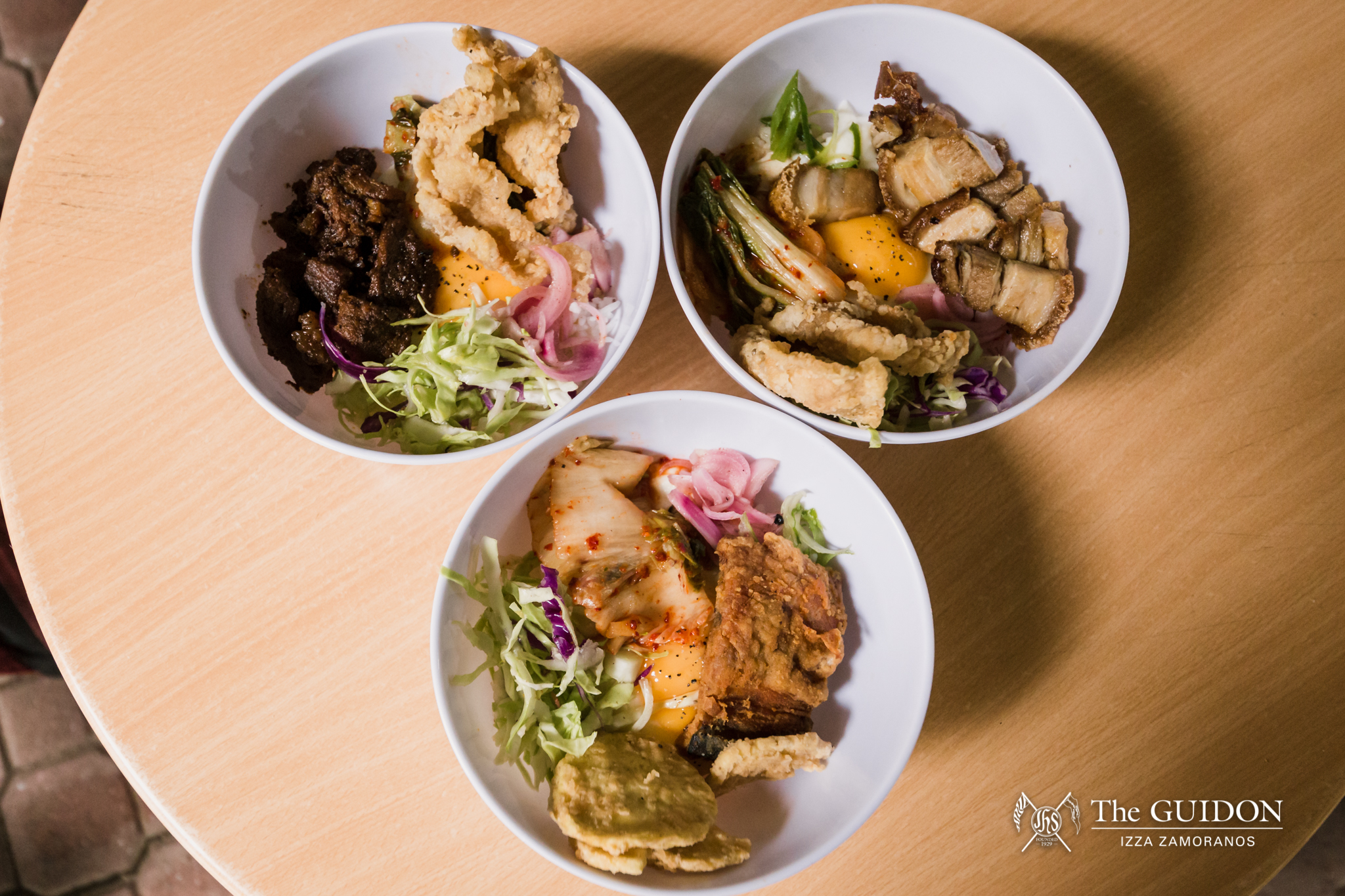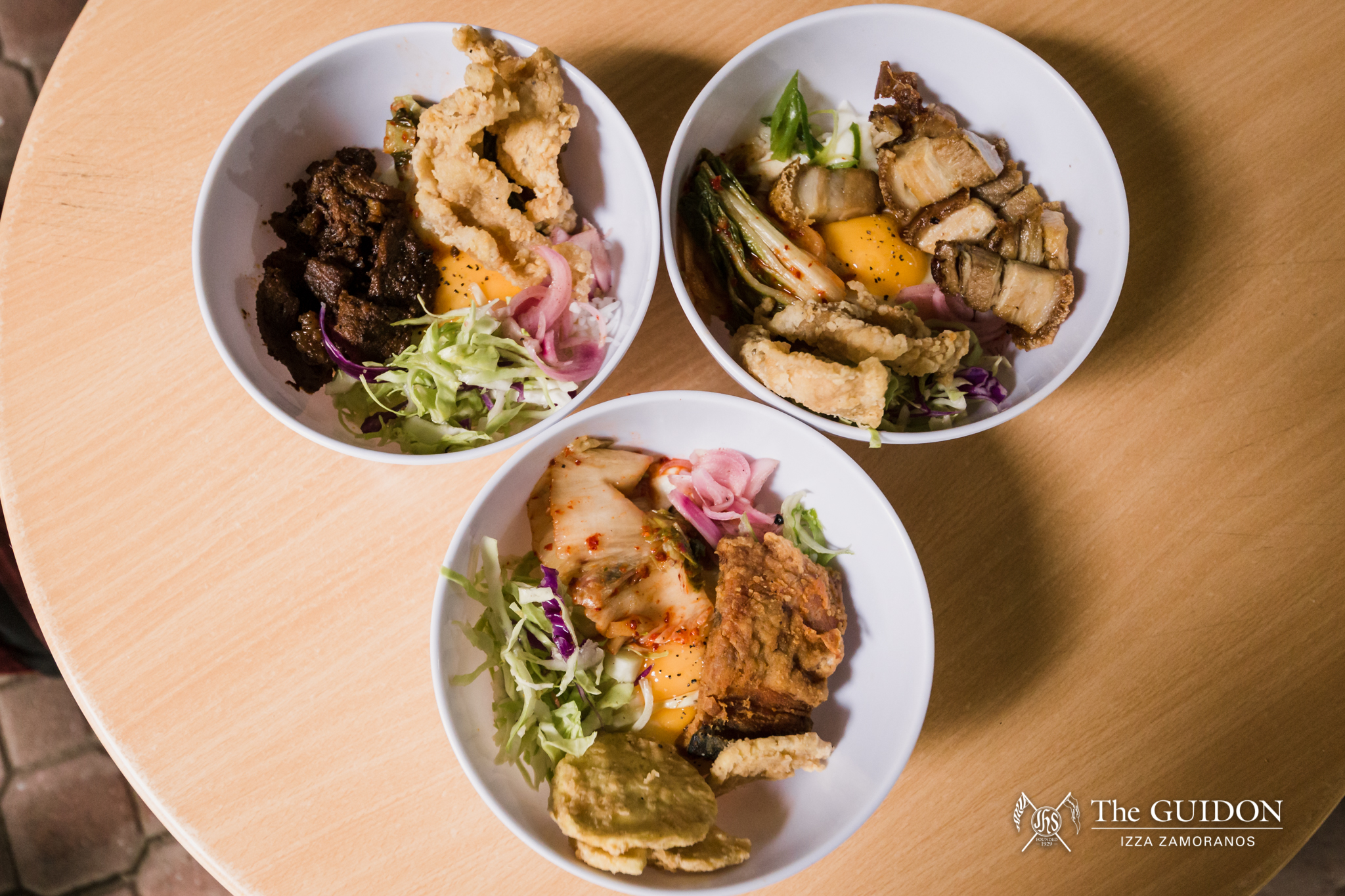Despite the cultural misgivings many have with the “F” word, ours is a reality that’s almost undeniable at this point: In contemporary Filipino cuisine, fusion is king. Smithsonian Magazine has claimed that “Filipino cuisine was Asian fusion before ‘Asian fusion’ existed,” and in a country rich with cultural influences from centuries of colonization, that isn’t too difficult a notion to accept.
Taste
Alpas is one entry in a long list of fusion-inspired stalls in this year’s rendition of JSEC. On the surface, their dishes might seem like kimchi mindlessly plastered onto Filipino dishes. This might be the case for customers looking for truly authentic Korean cuisine, but make no mistake: The results have been nothing short of a revelation. All their rice bowls come with a sunny side up egg, pickled onions, red cabbage, leeks, and garlic rice, with a choice of chicken skin or kamote chips on the side. Sauces are also available for customers looking for some more punch—because what would Filipino dishes be without sawsawan?
As overpowering and all over the place as this sounds, there’s a delicate balance between two cultures here, and it definitely works. The combination of elements is almost artful once vigorously mixed together the way you would with bibimbap, which literally translates to “mixed rice.”
Albeit rather lacking in our beloved balat, the lechon kawali bowl was an incredibly fresh take on the Filipino classic, as the savory taste of sársa contrasted perfectly against the earthy tang of the kimchi. The tapa bowl served one of the better attempts at the local breakfast favorite, with meat slices spiced to perfection giving it a rich, salty flavor. The silog portion of the meal meshed perfectly with the mixed vegetables and afforded it a dimension higher than just a rice-and-ulam dynamic.
With all these parts coming together, though, the overall impression isn’t as powerful or exotic as you might expect without one focal point in each dish. Their kimchi lacked the punch and spice you’d typically expect from restaurant kimchi. The taste of garlic was completely lost in the mix, as the garlicky undertones one would look for seemed almost nonexistent in their garlic rice. The bangus meal in particular was passable at best and left much to be desired by way of taste, as it felt like it needed a heavy dose of sauce to be enjoyable because of its unremarkably dry texture.
Concept
While cuisine from the Land of the Morning Calm has been something of a trend these days, the idea behind Alpas’ take is simple but interesting: marrying classic Filipino silog dishes with Korean ingredients.
With its promising concept comes what is perhaps Alpas’ biggest strength: its accessibility. The idea behind the stall should appeal to K-pop stans while still being reminiscent of what lola used to make after church. Given the relatively high volume of fusion stalls in JSEC this year, though, Alpas may not be turning heads with their concept.
Value for money
Nevertheless, there is always something to be said for food that’s done right, and theirs is a shining example. After all this, there’s really not a lot to complain about. Selling at Php 100 and Php 130 for solo and combo meals respectively, the stall offers a good deal once you consider all the ingredients each bowl has. It’s a small price to pay for a filling and very Filipino take on authentic Korean-fusion.
Final verdict
In 2018’s sea of Filipino fusion and Samgyup lookalikes, what sets Alpas apart from its other contemporaries in fusion cuisine is this: It just works. You won’t feel unsatisfied after any of their bowls.
Rating: 4/5
Editor’s note: This JSEC stall is co-owned by Patrick R. Roasa, a member of The GUIDON’s Vantage Magazine staff. He is currently abroad for his Junior Term Abroad (JTA) semester.






